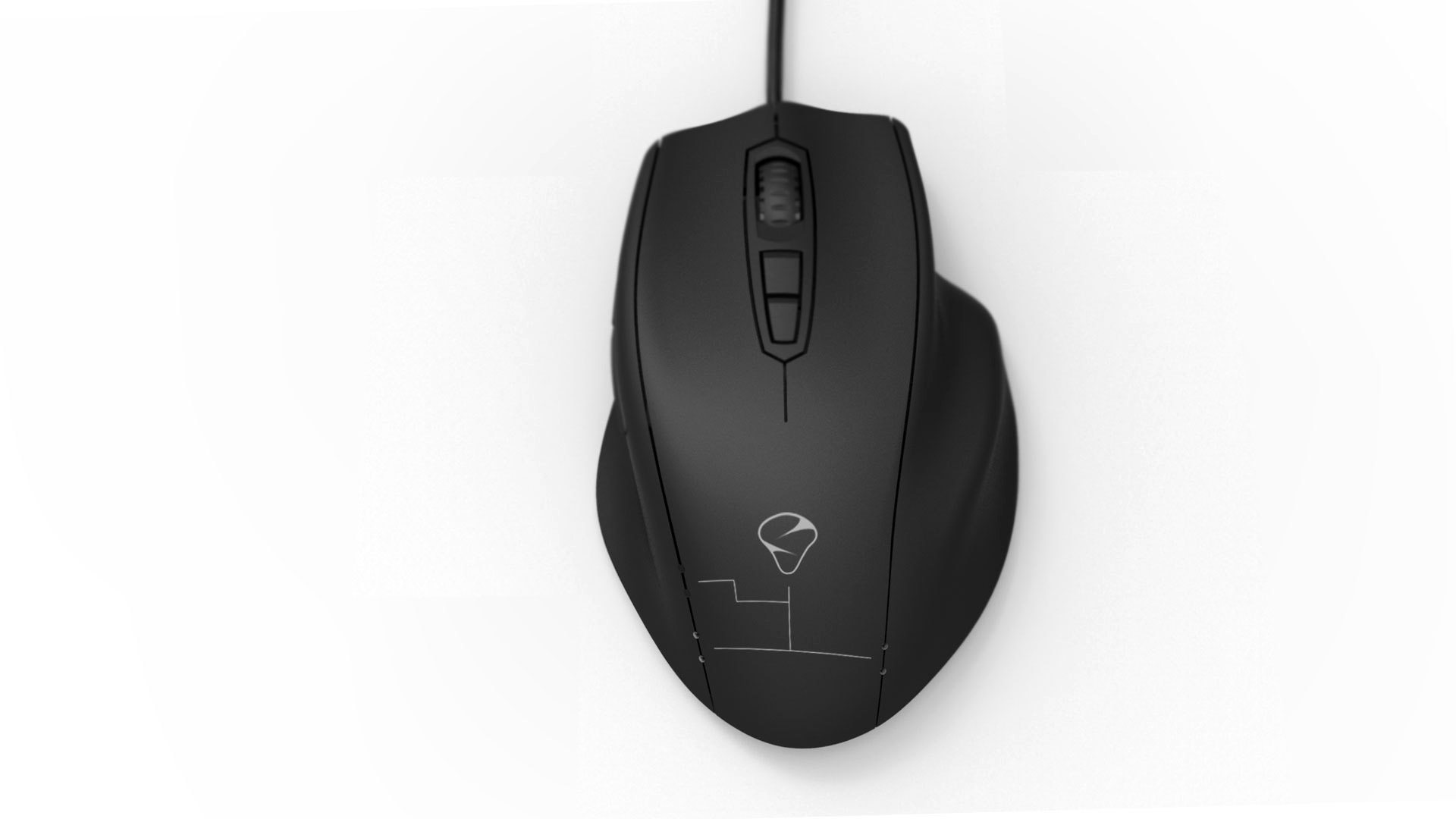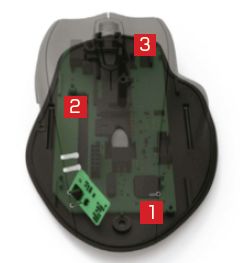The mouse that watches you sweat

"For the last few years, it’s been all about taking last year’s mouse, trying to hype it with marketing, and shoving it down the throat of the 14-year-old,” says Carl Silbersky, unimpressed by the state of the PC peripherals market in 2015. He’s the new CEO of Mionix, a gaming-hardware company based in southern Sweden, fresh off the back of selling his previous company to Apple. “We developed some amazing technology there,” he says, “but what do I see when I come to gaming peripherals? Not much at all. Multicoloured LEDs are not innovation.”
Silbersky wants to start building products for gamers that make them better at what they do, and the company’s first attempt is the NAOS QG. At a glance, it looks like a regular gaming mouse, but peer a little closer and you’ll spot small metallic sensors poking out of the sides. These collect data on heart rate and galvanic skin response (or ‘sweat’, as most of us call it) to try and work out how stressed you are while playing.
“You get an insight into your reactions,” says Silbersky. “You can understand how you react in certain ways, and if you’re playing in a team you can see how your teammates react.” Getting that data live can draw attention to your stress levels, and afterwards you can pore over the data in more detail to see how it changed over the course of the game. “We’re taking a first stab at interlinking the biodata of a person with what’s happening on their screen,” Silbersky says.
We’re taking a first stab at interlinking the biodata of a person with what’s happening on their screen.
The idea came out of one of the hackathons that Mionix runs every now and then in its offices in Malmö. An engineer added some extra sensors to a mouse that was lying around, then played a few rounds of Starcraft II. The data that came out impressed Silbersky, and he asked the engineer to refine it a little more into a proper prototype. In December 2014, the company launched a Kickstarter campaign, asking for $100,000 to make the NAOS QG a reality. “December is the worst month to do a Kickstarter,” Silbersky says. “We knew that.” But the funding was successful nonetheless, and now production is in full swing, with the first deliveries to backers due in August.
In the meantime, Mionix needs to work out how to present the data to people. Right now, you can overlay it on about 700 games with the help of an app called Overwolf, and also include it on your Twitch stream. “But we think there’s so much more you can do with this data,” says Silbersky, so the company will also let programmers access the data to build their own apps. “We don’t know where it’s going, but we have some ideas and we’ll continue hammering those out.”

Mionix isn’t the only company getting excited about the possibilities of biometrics. Valve has long had an interest in the technology: Gabe Newell told PC Gamer back in 2010 that the company was excited about using it as an input method: “through combining [biometric] information, we can get a more accurate indication of player state. If you’re in a competitive situation and you see someone’s heart rate go up, it’s more rewarding than we’d have thought.”

1. Accelerometer
The QG’s accelerometer measures g-forces inside the mouse, so it can learn how fast it’s being fl ung around the mat. Gamers could use that data to relax their movements, preventing wrist sprains.
2. Galvanic Skin Response
These sensors measure the electrical resistance of your skin, which varies depending on how sweaty you are. The more stressed you are, the more you tend to sweat.
3. Heart Rate
Your heart rate is another signifier of stress. This optical sensor looks at variations in blood fl ow in your hand to work out how fast your heart is beating.
The last iteration of the Steam controller didn’t appear to include biometric sensors—Valve says it discovered that hands constantly moving around aren’t a great source of biofeedback. Instead, the company seems to be more interested in your earlobes—the hinted-at VR headset will gather data from them in real time and use it to adjust your experience. At the time of going to press, Valve is about to reveal more about its VR hardware and controller at GDC—that’ll show much biometrics matter to the company.
Keep up to date with the most important stories and the best deals, as picked by the PC Gamer team.
Elsewhere, biometric videogames are proving useful when it comes to medical rehabilitation. Dr Martin Rydmark, a professor of medical informatics at the Sahlgrenska Academy Institute of Biomedicine, told me that these types of device can give “the feeling of control and reality” to people with brain damage and neurological diseases. He’s been working with virtual reality, motion tracking and haptics devices for 15 years, studying how they can be used in the rehabilitation of stroke victims and assessing the motor function of patients with Parkinson’s disease. But he cautions that a sense of reality is important for patients, and that they don’t want to become cyborgs. “Biometric tools must be used in a natural way and not give the sense of being handicap tools,” he says.
Aside from medicine, the most immediate application for biometrics in gaming is probably e-sports. Professional athletes have long used data to optimise their performance, and there’s no reason why pro gamers shouldn’t do the same thing. Performance under stress is a key skill for many pro players, and Mionix has been working with teams to inform the development of the NAOS QG. “If I were a coach on a team, I’d be fascinated to drill down into understanding how the team can collaborate better,” says Silbersky.

In fact, some teams are already experimenting with eye-tracking devices and even biometric shirts to work out how to further players’ abilities. Amine Issa, a researcher at the Mayo Clinic Human Integrative and Environmental Physiology Lab, and a former pro-gamer himself, has worked with League of Legends players to assess both physical and mental performance. He used eye-tracking to ascertain where players were focusing their attention, and shirts with sensors to measure heart and breathing rates. “We established two things: bad habits are easy to form, and thinking deeply during the game is bad,” he reported. “The two are probably related and lead to a host of common problems: tunnel vision, slow decision-making and bad decision-making.”
Silbersky, for his part, is hopeful that quantified gaming devices appeal to regular gamers as much as they do pros. “If I were taking games seriously, I’d definitely like to understand my insights,” he says. “We’re not just using these mice when we game, we also use them when we’re working, eight hours a day. I’m fascinated by it! I see huge opportunities.”

